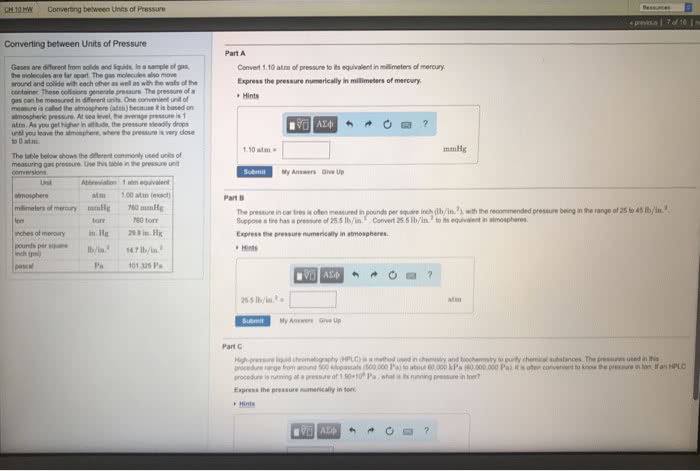CHEM 111 Chapter Notes - Chapter 12: Ideal Gas, Partial Pressure, Stoichiometry
Document Summary
Pressure- force per unit area; expressed in many units, such as mm hg, atm, lb/in2, torr, and pascal. Atmospheric pressure- the pressure experienced by objects on earth as a result of the layer of air surrounding our planet. A pressure of 1 atmosphere (1 atm) is the pressure that will support a column of mercury 760 mm high at 0 c. Barometer- a device used to measure atmospheric pressure. 1 atmosphere- the standard atmospheric pressure, that is, the pressure exerted by a column of mercury 760 mm high at a temperature of 0 c. Gases: particles are relatively far apart, particles are very mobile, gases take the shape and volume of the container, gases are easily compressible. Pressure of the atmosphere is measured by using a barometer: units of pressure include: Pascal, 1 atm = 101,325 pa = 101. 3 kpa. Pressure is directly related to the number of molecules in the sample.


